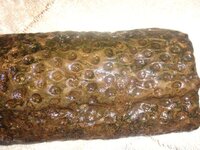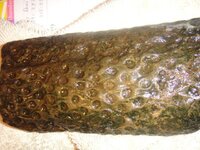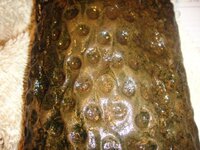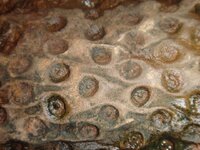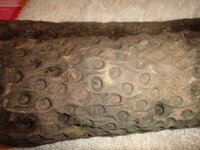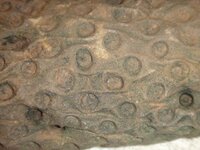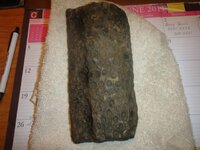huntress104
Hero Member
This is the best piece of petrified wood I have ever found. The bark on it is very well preserved and thick. Can some possibly identify it for me? I found it in the bottom of a creek under water. It was buried with just a small part of the edge sticking up. I looks to me like it could be very old because I have never seen a tree with that kind of bark on it anywhere.


